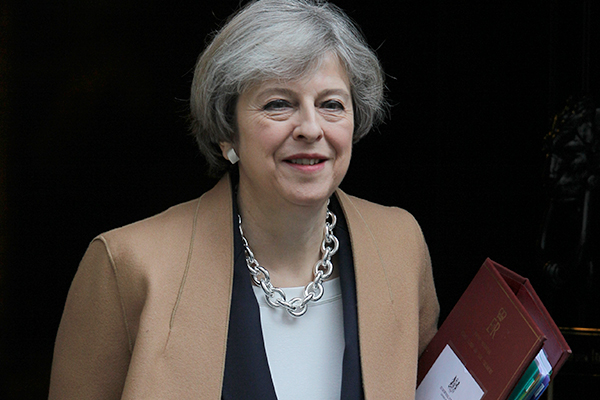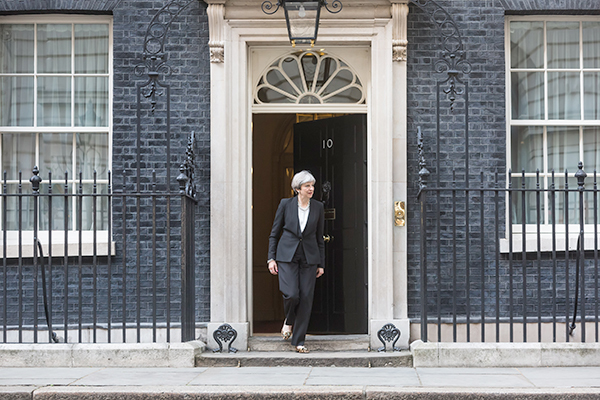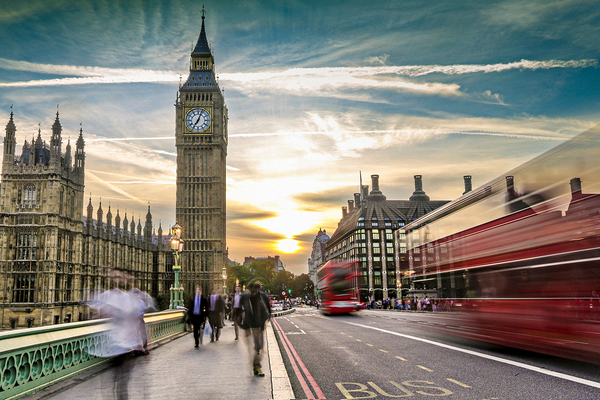You are viewing 1 of your 1 free articles
Five unanswered questions about Theresa May’s promise to fund cladding removal
The government has said it will “fully fund” the removal of dangerous cladding from social housing tower blocks, but questions over this pledge remain.
Prime minister Theresa May yesterday told parliament that the government “will fully fund the removal and replacement of dangerous cladding by councils and housing associations.” She said the cost of this work is “estimated at £400m.”
This is a change of course for the government, which had previously refused to fund the removal of cladding found not to be fire-safe in tests following the Grenfell Tower fire. Social landlords had previously warned the need to pay cladding costs could lead to cuts in house building budgets.
The government has now confirmed the £400m will be in the form of grant taken from the Affordable Homes Programme, which will be then topped up in the next round of funding to compensate.
But there are many unanswered questions about the policy, here are just five of them:
1. Why has it taken 11 months?
Councils and housing associations have been calling on government to provide help with the funding since a few weeks after the Grenfell Tower fire last June.
The government says it has “listened to what social landlords have been telling us about the cost” of cladding removal, but these warnings have been in the public domain for months.
In August, then communities secretary, Sajid Javid wrote to the sector to say it expected landlords to meet the cost. Since then it has resolutely refused to budge on providing a penny towards the work. Almost a year on from the fire, only seven towers have had the renovation work completed. Surely, given that the money was available, serious questions must be asked over why the government didn’t act decisively and quickly to ensure its removal.
2. Where does the £400m figure come from?
In Camden, removal and replacement works to 10 blocks is estimated to cost north of £50m, while the removal of cladding from three blocks in Plymouth is expected to total £14m.
Obviously each tower block is different and costs vary but taking these examples as indicative, the money would stretch to fund removal work on around 80 blocks.
With (at least) 151 buildings still requiring work, and 54 where work has not even started, the £400m looks more than a little light.
The government has said the money will be in the form of grant, with conditions attached. It is not yet clear what these conditions will be. Neither is it clear how deep the Treasury’s pockets are if the total bill proves much higher than the estimate.
3. Will the government recompense social landlords for work already carried out?
Social landlords have spent tens of millions on removal works to date. There will be cries that those who acted promptly and responsibly are being penalised if there is no option for them to claim back the costs already incurred from the money now available.
It is understood funding will be available to social landlords who have already begun the necessary work, but whether this is to pay for its completion or cover the costs already incurred is not clear.
4. Can the industry cope with the workload?
A lack of capacity among contractors was partly blamed for the glacial pace of removal work back in January, and it is far from clear that there are enough skilled workers and contractors to cope with the scale and pace of the work required. Money, as ever, is only part of the equation.
5. What of private sector blocks?
The risk is no less acute to private leaseholders, with at least 132 private blocks identified as having dangerous cladding in official government data.
Sector figures expect the true number to be much higher, with many buildings as yet unchecked. Leaseholders at these blocks were arguably in an even more difficult situation than social housing tenants, as in the majority of cases their landlords were demanding they foot the astronomical bill for removal.
This remains an urgent, life threatening dispute which no one seems to have any clear idea how to resolve.
In response to this, a government spokesperson said: “We have made clear that we want to see private sector landlords follow the lead of the social sector and not pass on the costs of essential cladding replacement to leaseholders.
“We are keeping the situation under review and ministers are meeting industry representatives shortly to discuss this. We have not ruled out any options for ensuring this objective is met.”
The Paper Trail: The Failure of Building Regulations
Read our in-depth investigation into how building regulations have changed over time and how this may have contributed to the Grenfell Tower fire:
Never Again campaign
In the days following the Grenfell Tower fire on 14 June 2017, Inside Housing launched the Never Again campaign to call for immediate action to implement the learning from the Lakanal House fire, and a commitment to act – without delay – on learning from the Grenfell Tower tragedy as it becomes available.
One year on, we have extended the campaign asks in the light of information that has emerged since.
Here are our updated asks:
GOVERNMENT
- Act on the recommendations from Dame Judith Hackitt’s review of building regulations to tower blocks of 18m and higher. Commit to producing a timetable for implementation by autumn 2018, setting out how recommendations that don’t require legislative change can be taken forward without delay
- Follow through on commitments to fully ban combustible materials on high-rise buildings
- Unequivocally ban desktop studies
- Review recommendations and advice given to ministers after the Lakanal House fire and implement necessary changes
- Publish details of all tower blocks with dangerous cladding, insulation and/or external panels and commit to a timeline for remedial works. Provide necessary guidance to landlords to ensure that removal work can begin on all affected private and social residential blocks by the end of 2018. Complete quarterly follow-up checks to ensure that remedial work is completed to the required standard. Checks should not cease until all work is completed.
- Stand by the prime minister’s commitment to fully fund the removal of dangerous cladding
- Fund the retrofitting of sprinkler systems in all tower blocks across the UK (except where there are specific structural reasons not to do so)
- Explore options for requiring remedial works on affected private sector residential tower blocks
LOCAL GOVERNMENT
- Take immediate action to identify privately owned residential tower blocks so that cladding and external panels can be checked
LANDLORDS
- Publish details of the combinations of insulations and cladding materials for all high rise blocks
- Commit to ensuring that removal work begins on all blocks with dangerous materials by the end of 2018 upon receipt of guidance from government
- Publish current fire risk assessments for all high rise blocks (the Information Commissioner has required councils to publish and recommended that housing associations should do the same). Work with peers to share learning from assessments and improve and clarify the risk assessment model.
- Commit to renewing assessments annually and after major repair or cladding work is carried out. Ensure assessments consider the external features of blocks. Always use an appropriate, qualified expert to conduct assessments.
- Review and update evacuation policies and ‘stay put’ advice in the light of risk assessments, and communicate clearly to residents
- Adopt Dame Judith Hackitt’s recommended approach for listening to and addressing tenants’ concerns, with immediate effect
CURRENT SIGNATORIES:
- Chartered Institute of Housing
- G15
- National Federation of ALMOs
- National Housing Federation
- Placeshapers













